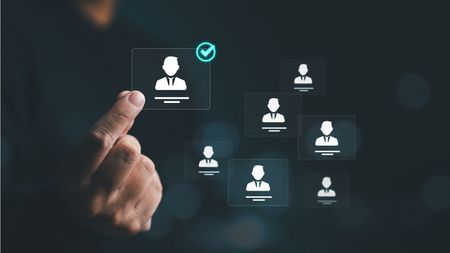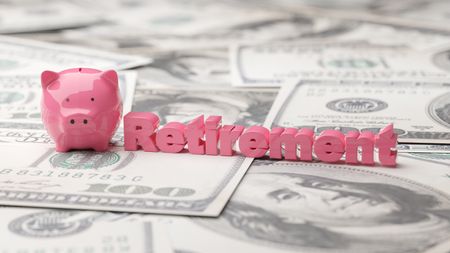When Businesses Fail or People Can’t Pay Bills, Liability Limits Can Save the Day
From LLCs to trusts, protections are here to help — not just companies and individuals, but our whole economy itself. So, anyone struggling in these trying times should be aware of their rights and new possibilities for recovery.


Most people would agree that a person who borrows money, contracts for the manufacturing or delivery of goods and services, or enters into agreements that require or encourage substantial investment by other parties should not be allowed to fail to meet those obligations without consequence. Regardless of the cause of these breaches of contract or the good faith of the perpetrator, the losses they cause necessitate recovery efforts by lenders, suppliers, contractors and distributors, often at great monetary and opportunity cost.
Our economy is fed and supported by people making such “promises” and other people acting in reliance on them. Keeping those promises is essential to a community’s economic health and its members’ financial well-being, so any breach supports an actionable cause for recovery. On the other hand, protecting people from destitution for business and financial risk-taking is necessary to encourage and sustain economic growth, so even such a perpetrator should have reasonable protection from financial destruction — especially this year, with the onset of the COVID-19 pandemic and recession.
Laws Limit Losses to Help Spread the Cost of Business Risk
So, when a business or personal financial risk is undertaken in good faith but fails by some breach or unrelated cause, the law seeks to avoid an inequitable outcome that imprudently favors the lender, the investor, the supplier or the manufacturer over the borrower, the operator, the buyer or the retailer — and vice versa. The law in most states also allows people to isolate unrelated investments, retirement savings, personal homes and other assets from the reach of such creditors to protect them from financial ruin.

Sign up for Kiplinger’s Free E-Newsletters
Profit and prosper with the best of expert advice on investing, taxes, retirement, personal finance and more - straight to your e-mail.
Profit and prosper with the best of expert advice - straight to your e-mail.
These protections — along with state and federal supports, recovery funds, bailouts and tax relief — help spread the costs and risk of business enterprise and personal financial failures among all of us. Similar safety nets and supports for wage employees, the unemployed, retired and disabled persons, and their dependents distribute income and resources to sustain a minimum standard of living and drive an economy mostly dependent on a thriving population of consumers. This symbiotic social structure is made more or less durable by the politically driven choices we make and the protections we establish and support.
Protections Start with LLCs
Business owners commonly protect themselves through the creation of limited liability companies or limited partnerships, which shelter investors from losses exceeding their investment in those entities. Those entities stand between the actual people and the promises and obligations they undertake and shield them from losses caused by reasonably unforeseeable events as long as they sufficiently fund those entities or insure them against the reasonably foreseeable ones.
Should a breach occur, a fair settlement of these competing interests may be sought through private mediation or arbitration, public litigation, in bankruptcy court or a combination of any of the above. But what happens when the legally available resources of one of the parties, whether a person or a business entity, are insufficient to cover their obligations? In many cases, the judgment or settlement is structured to fit their financial ability, which may include forced liquidation of capital (i.e., selling land or equipment), garnishment of wages, an order for installment payments, or an unfulfilled judgment that may be enforced against future income or resources.
But what if this lack of capital resources is due to the breaching party’s own negligence or bad faith? What if the breaching party failed to properly capitalize the venture, failed to prudently obtain available insurance coverages, or improperly siphoned off necessary capital reserves? Well, then the injured party may seek to recover from the obligor’s personal assets, even those usually protected by limited liability and other laws. But even some of those assets warrant further protection.
Protections Can Be Extended with Trusts
Qualified retirement plans and individual retirement accounts (IRAs) are mostly shielded from such creditors. Why? Because our economy is better protected by encouraging personal investment in retirement than by protecting business investment. Trusts established for a person’s loved ones — such as a spouse and descendants, charitable purposes or other favored uses — also enjoy greater creditor protection if they are irrevocably funded without an intent to defraud known creditors. And some states even allow a person to be among the trust beneficiaries of his own irrevocable trust and still shield those assets from creditors.
These so-called domestic asset protection trusts exist solely under state law in 17 states: Alaska, Delaware, Hawaii, Michigan, Mississippi, Missouri, Nevada, New Hampshire, Ohio, Oklahoma, Rhode Island, South Dakota, Tennessee, Utah, Virginia, West Virginia and Wyoming. Their assets may not be beyond the reach of some courts and government agencies, including the bankruptcy court, and taxing authorities, including the IRS (with some limitations). In 14 states, these asset protection trusts are still subject to child and spousal support; support, maintenance and property settlement orders; and/or obligations through divorce proceedings.
If a person is not a resident of one of these asset protection states, he can usually establish the trust anyway through a qualified trustee, typically a resident corporate fiduciary with trust powers in that state. On top of sheltering these assets from creditors, these states also may severely limit the time period during which a creditor claim can be brought against the trust and set the standard of proof required to win an award substantially higher than typically applied to contract and business litigation cases.
The assets that may be transferred to an asset protection trust must not be directly related to an operating business (a capital reserve account or its accounts receivables, for example). The transfer of personal assets must not cause the trustor to be undercapitalized for his existing obligations or cause him to be otherwise insolvent (unable to support himself and his dependents). Finally, the trustor must retain sufficient assets to cover known and reasonably foreseeable obligations, including existing creditor claims, even if not yet noticed or included in a civil complaint. Other than these exceptions, these states have determined that the benefits of entrepreneurial risk-taking outweigh the additional burdens on creditors.
Keep on Top of Changes and New Possibilities
The efficacy and ethics of asset protection trusts are still being debated. But most attempts to reach assets properly transferred to such trusts are settled out of court. There are still numerous reported court cases that guide advisers and trustors alike in ways to properly structure, fund and respect the independence of trusts. This can reduce the temptation for creditors to seek recovery from the trust and compel them to accept a lesser amount in the recovery of a valid claim.
It may be too late for many failing business owners to investigate legal ways to reduce creditor risk during the pandemic and recession. However, they may benefit from recent changes in bankruptcy laws, not covered in this article. For everyone with substantial assets at risk, beyond and including operating business investments, now is a good time to seek legal, accounting and insurance advice. These experts can help you restructure business entities, review tax elections and insurance strategies, and research trust strategies for wealth transfer and asset protection, possibly using nonresident trusts.
Get Kiplinger Today newsletter — free
Profit and prosper with the best of Kiplinger's advice on investing, taxes, retirement, personal finance and much more. Delivered daily. Enter your email in the box and click Sign Me Up.

Timothy Barrett is a Senior Vice President and Trust Counsel with Argent Trust Company. Timothy is a graduate of the Louis D. Brandeis School of Law, past Officer of the Metro Louisville Estate Planning Council and the Estate Planning Council of Southern Indiana, Member of the Louisville, Kentucky, and Indiana Bar Associations, and the University of Kentucky Estate Planning Institute Committee.
-
 Tariff Turmoil Overshadows Strong March Jobs Report: What the Experts Are Saying
Tariff Turmoil Overshadows Strong March Jobs Report: What the Experts Are SayingThe March jobs report came in stronger than expected, but the good news is being overshadowed by President Trump's trade war.
By Karee Venema Published
-
 Retirees: Is Your Local Bank Closing? Four Ways to Cope
Retirees: Is Your Local Bank Closing? Four Ways to CopeBank branches are closing across the country. If you are among the retirees who prefer to bank in person, you have some options.
By Donna Fuscaldo Published
-
 Q1 Post-Mortem: The Market Shifts You Don't Want to Ignore
Q1 Post-Mortem: The Market Shifts You Don't Want to IgnoreAs the second quarter gets underway, here are some takeaways from the market's first-quarter performance to consider as you make your investment decisions.
By Prem Patel, MBA, IAR Published
-
 How to Replace a Corporate Trustee (and Make Other Trust Changes)
How to Replace a Corporate Trustee (and Make Other Trust Changes)The right choice of trustee today may not be the right choice for trust beneficiaries in the future. Here's what you should know.
By Christopher F. Tate, J.D. Published
-
 How to Balance Your Insurance Expectations vs the Reality
How to Balance Your Insurance Expectations vs the RealityJust because you have an insurance policy doesn't mean that you're totally covered in the event something bad happens.
By Karl Susman, CPCU, LUTCF, CIC, CSFP, CFS, CPIA, AAI-M, PLCS Published
-
 How Building Liquidity Into Your Retirement Plan Can Pay Off
How Building Liquidity Into Your Retirement Plan Can Pay OffTo succeed in investing for retirement, you need time and discipline — liquidity can give you both.
By Samantha Compton, IAR Published
-
 Striking Oil in Opportunity Zones: Now Might Be the Best Time to Invest
Striking Oil in Opportunity Zones: Now Might Be the Best Time to InvestYou could unlock hidden wealth in QOZs with strategic oil and gas investments, potentially combining tax advantages with long-term growth in an essential industry.
By Daniel Goodwin Published
-
 What You Don't Know About Annuities Can Hurt You
What You Don't Know About Annuities Can Hurt YouLack of awareness leads many to overlook these potent financial tools, and with the possibility of running out of money in retirement, that could really hurt.
By Ken Nuss Published
-
 Three Keys to Logical Investing When Markets Are Volatile
Three Keys to Logical Investing When Markets Are VolatileFocusing on these market fundamentals can help investors stay grounded rather than being swayed by emotion or market hysteria.
By Dennis D. Coughlin, CFP, AIF Published
-
 Yes, the Markets Are Spooked, But You Don't Have to Be
Yes, the Markets Are Spooked, But You Don't Have to BeIt's human nature for investors to freak out in a downturn. But with a little discipline, you can overcome the urge to sell and stay focused on long-term goals.
By Jimmy Lee, IAR Published